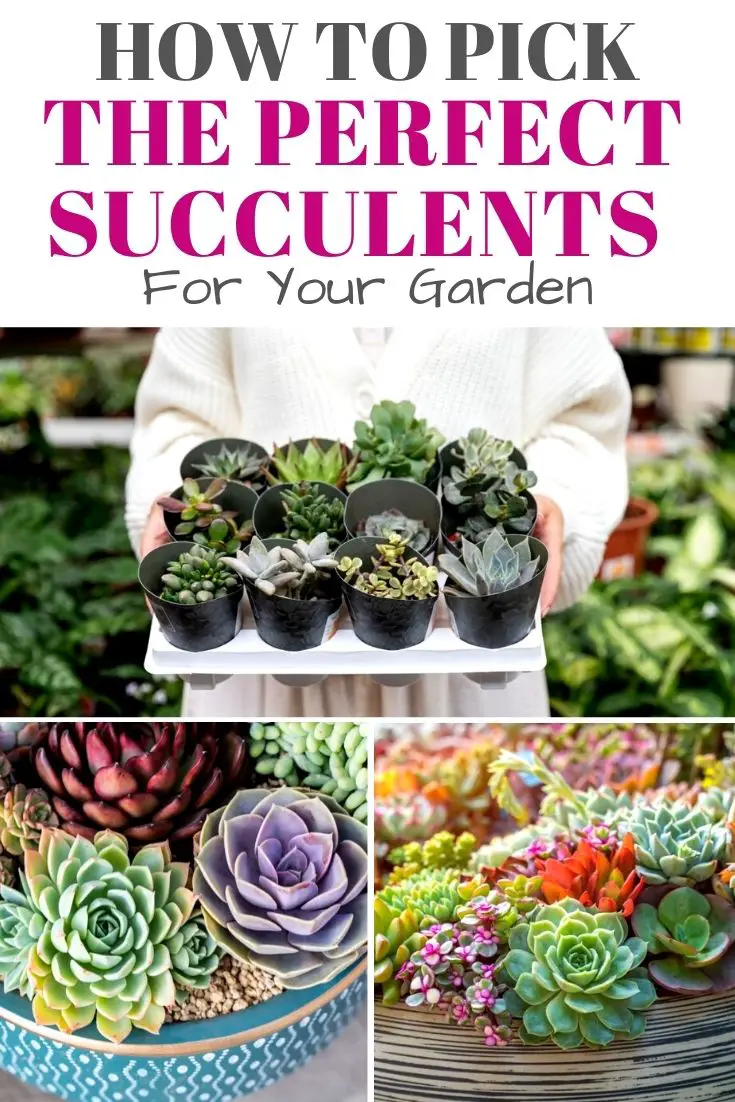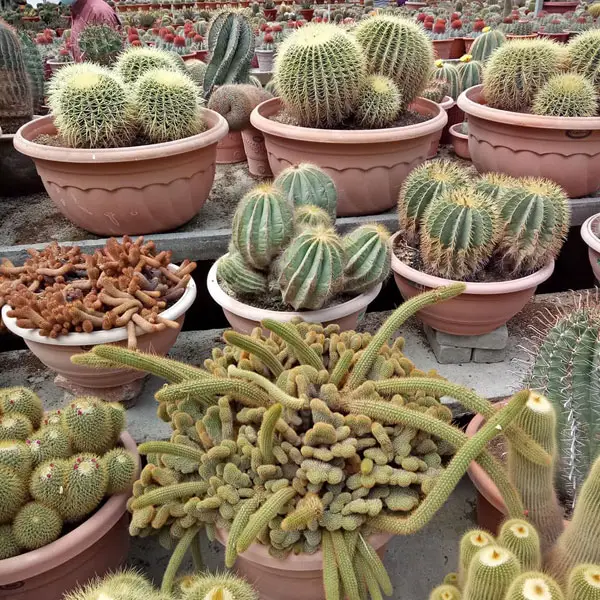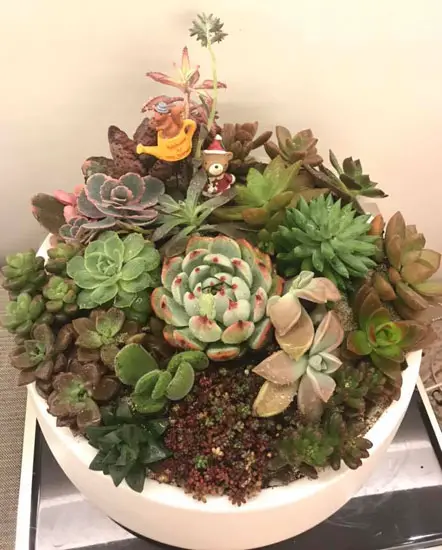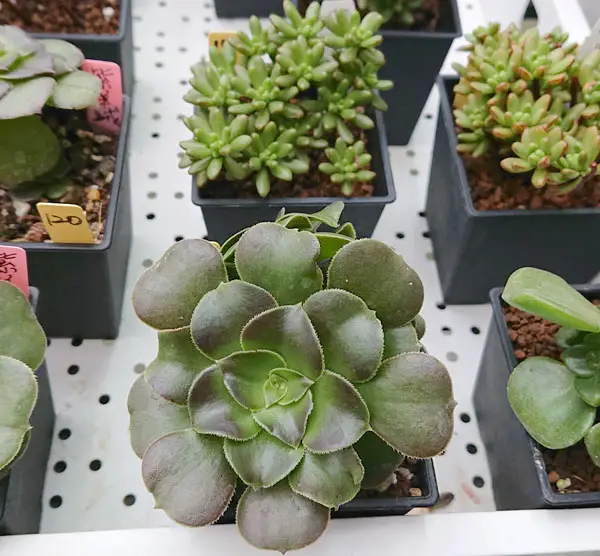Succulents are wonderful plants. Unique from flowers but still lovely and lush in their own right, they are a popular pick with those new to plants and experienced gardeners alike. They come in a wide variety of types and sizes, thrive in heat, and grow well in pots so they can be transported inside when the weather is wet. And with this vast range of options, you may be wondering how you can pick the perfect succulent for your home.
There are other things to look out for and keep in mind when choosing a succulent and learning how to keep it healthy and lasting, including the pot and the best environment for it to thrive. Read on to learn more about picking the perfect succulent and how you can continue to enjoy them for as long as possible.
How to Pick a Succulent
When choosing a succulent, there are several things you will want to consider, the primary being where you live.
Some succulents fare better in warmer climates than cold ones, so check what types thrive in your area. Because cacti are succulent, you might assume that other succulents may not survive in non-desert areas. However, there are quite a few plants that will thrive even in the bitter cold. Two of the most popular are:
- Hens and Chicks: A type of sempervivum succulent, Hens and Chicks can survive in temperatures reaching the negatives.
- Blue Elf: This succulent is incredibly sturdy and can handle extremes of all kinds of weather, including intense sunlight, frigid cold, and even droughts.
Consider Your Experience Level
How much time are you able to dedicate to your new plant? People with a more green thumb may be more willing to care for a more sensitive succulent than hardier ones.
If you are new to the world of succulents or gardening, the following are some great options that are easy to maintain, sturdy, and are not easily killed by insects:
- Haworthia Zebra Plants
- Cactus Opuntia
- Echeveria
- Sempervivum
- Sedum Donkey’s Tail
Consider the Pets in the Home
Some succulents are toxic to dogs and cats, so if you are a pet owner, you will want to choose a plant that will not pose any danger.
Haworthia Zebra, Cactus Opuntia, Echeveria, and Sempervivum are all non-toxic succulents, so if you have a curious pet and like to take a bite out of plants, you do not have to worry about them becoming ill if they take an interest in your new succulent.
Check the Succulent’s Health
Succulents may seem like an easy-to-care-for plant—and in many ways, they are—but you must choose a healthy plant, to begin with before you buy it.
Once you have decided which kind of succulent you want, one of the first things you should do is compare two of the same kind of plant. By doing this, it is easier to see which is healthier.
Some signs of an unhealthy succulent are:
- Overwatering: indicated by yellow, squishy leaves and soil that never seems to dry
- Underwatering: indicated by brittle, dried up, or skinny leaves that fall off the plant
- Not enough sunshine: indicated by tall succulents with a lot of space between the leaves
- Too much sunshine: indicated by black and brown spots on the leaves
- Bug infestation: indicated by white bugs and cobwebs
Several factors indicate a healthy plant—including a couple that might surprise you. They are:
- Succulents with the leaves clustered together.
- Plush leaves (this is indicative that they are holding their moisture)
- Leaves changing colors—it is fairly common for succulents to take on a pink or reddish hue during the spring and summer when they get more sunshine and then go back to their paler blue-green hues during the colder months.
- Dead leaves at the bottom of the plant: this means your succulent is healthy, and to keep growing, it is getting rid of older leaves and replacing them with new ones.
How to Choose a Pot for Succulents
Choosing the right pot is one of the most important aspects of maintaining the health of your succulents. Some things to keep in mind about the pot you pick for your succulent are:
- The circumference: If you want your succulents to grow, you need to buy a pot with a larger circumference than the plant itself, but not a huge amount. A little bit of space will give the leaves a chance to grow, but if the pot is too large, the roots will grow faster and deeper than the leaves have the chance to catch up.
- The height: Succulents come in a wide variety of sizes and shapes—tall, short, wide, and slender. Picking a pot with the correct height can help ensure that whatever succulent you have decided will display the one for you in the most flattering way.
- Whether it has good drainage: Succulents are plants that thrive on less water, meaning that the plant will die if it’s overwatered. Therefore, when you are looking for a pot, choose one that has good drainage. Pick pots made of a certain material that allows water to evaporate and dry off or those with holes in the bottom.
What Kind of Pot is Best for Succulents?
As mentioned above, you want to be sure that the pot you choose for your succulent is made of the right material to ensure proper water drainage. Choosing the right material option depends a lot on where you are planning on keeping your succulent. Pots that may help your succulents thrive outdoors may work poorly for an indoor succulent.
The six main pot material options chosen most often are as follows:
Succulent Pot Material | Pros | Cons |
Plastic | - Lightweight | - Can break or tear easily |
Terracotta or Ceramic | - More aesthetically pleasing | - Very heavy |
Resin | - Lightweight | - Material is not sturdy |
Metal | - Good for short-term growing | - Gets hot very quickly |
Wood | - Unique looking | - Can easily rot if there is not enough airflow or sunshine to dry it out |
Glass | - Attractive material; can be painted in a decorative way | - Can break easily |
If you choose a smaller succulent or want to keep your succulents indoors, the pot that will give you the most for your money would be made out of terracotta or ceramic. Both materials are breathable, meaning drilling holes is unnecessary for drainage and causes less of a mess.
If you decide to purchase a larger succulent, plastic is the ideal material container to keep them in as it is lighter and much easier to move around.
Conclusion
Succulents are an excellent option for indoor and outdoor plants, no matter which climate you live in. They are soothing, lovely, and relatively easy to take care of once you know what to look out for and have learned your individual plant’s specific needs.
Take the time to research different factors, including what a healthy succulent should look like and the type of pot that will help your succulents thrive so you can enjoy it as long as possible.
Did you find this post useful? Would you like to get back to it later? Save THIS PIN below to your garden, cacti, houseplant, cactus, and succulents boards on Pinterest! Thanks 🙂





